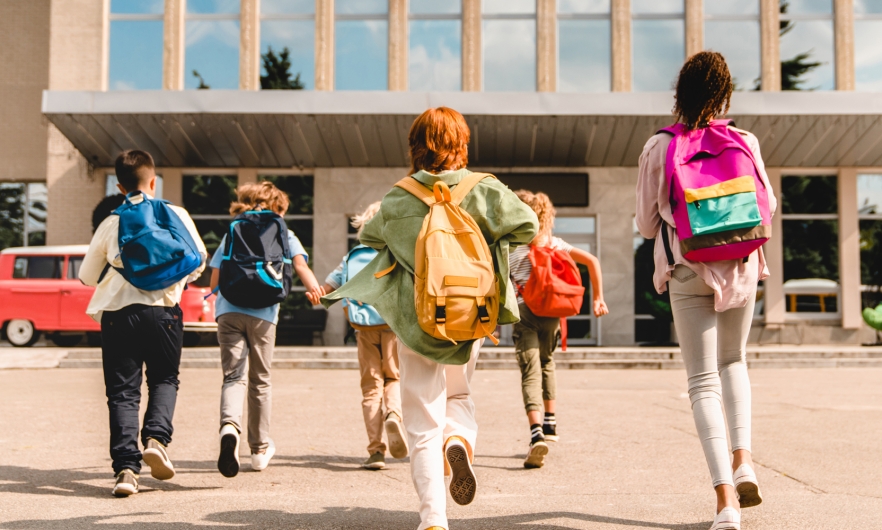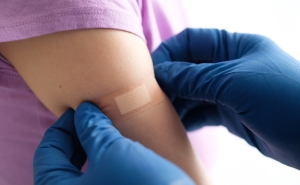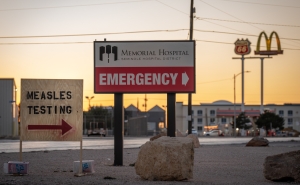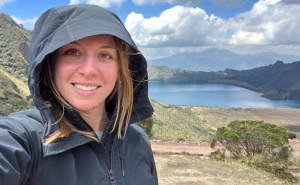Back to School: COVID, CDC Guidance, Monkeypox, and More
Bloomberg School experts have advice on how parents should prepare kids to return to the classroom.

Just in time for the start of the academic year, new CDC guidance is emerging. Although COVID-19 is still widely circulating, CDC is moving away from quarantining and distancing recommendations. With these updated guidelines, the potential for monkeypox outbreaks, and an uptick in other viruses, how should parents prepare their kids to return to school?
In this Q&A, adapted from the August 22 episode of the Public Health On Call podcast, Stephanie Desmon talks with Epidemiology associate professor Keri Althoff, PhD ’08, MPH ’05, and Elizabeth Stuart, PhD, MA, executive vice dean for Academic Affairs and a professor in Mental Health, about the upcoming school year, COVID risks and guidelines, vaccine mandates for kids, and a more holistic approach to health that takes prevention of other illnesses into account.
What do we know about the new CDC COVID-19 guidelines?
ES: The CDC is starting to steer the ship in a slightly different direction than we've been going. There's a lot of concern about the balance of personal responsibility on individuals, especially those who might be immunocompromised or have immunocompromised family members. [Guidance] is moving away from mask mandates, testing, long isolation periods, and quarantine, and toward the idea that people should decide for themselves if they will mask.
One thing that was great to see in the new guidance was more focus on ventilation and fundamental, structural pieces like continued focus on vaccination. That will really help. But I think we're going to need to be more nimble about the things that might rapidly change.
KA: The CDC guidance is playing catch-up with where people are in the pandemic and what they're willing to do, for better and for worse. We've removed quarantine recommendations, regardless of your vaccine status. But there is still encouragement to mask for 10 days and to test yourself at day 5 if you believe you've been exposed.
One of the things that this impacts most dramatically is the removal of test-to-stay programs in schools. If your child is exposed to COVID in school, test-to-stay programs could help them stay safely in the classroom. Now, with the removal of quarantine for those who have been exposed regardless of vaccination status, those kids won't be tested, and they'll be staying.
For parents and people in workplaces who had test-to-stay programs, this means thinking more critically about what your actions will be when you hear of a case in your child's classroom or at work. Will you decide to mask for a couple of days to reduce your exposure? Or because you're going on a trip and don't want to get COVID before then? Or because you're going to see a family member who is immunocompromised or in a residential facility?
The take-home message for all of this is: If you have not been vaccinated yet, the rollback in these mitigation strategies means that your risk level has changed, through no actions of your own. Now is the moment to think critically, get your questions answered about the vaccine, and then make the choice about whether you'd like to be vaccinated.
For everyone else, particularly as we head into the fall, when indoor spaces are going to be more of our norm for both work, school, and social engagements, [the question is,] are you boosted?
Will schools continue to report on exposures and positive tests as they had during the height of the pandemic?
LS: That was one of the things that I was very surprised by in the new guidance—less reliance on testing and surveillance. It's hard to pivot your behavior if you don't have the data about current case rates. Right now, it’s hard to know that data with [changing] measures and fewer PCR tests versus at home rapid tests. We need to make sure that people have access to information about the current situation in their community so that they can wear masks when cases are going up.
There's some push in some areas toward wastewater surveillance. Ideally, that could be done at a very low threshold at a school level, but we're not there yet. That is a hypothetical and happening in a few locations, but right now, we're going to be somewhat blind in terms of where case rates are to be informing some of these decisions.
Should there be a COVID vaccine requirement to attend school?
KA: We have to recognize that we have required vaccination to attend school for decades with other vaccines.
Studies are showing us that these vaccines do work well, even in small children. We are not seeing signals of greater harm from the vaccine than the benefit of being vaccinated. Overall, we know these vaccines are safe and effective. The bottom line is that there are going to be some places that require vaccination and others that don't. I think we have to remember, whenever we make such a requirement, that we must put resources toward making sure people have access to the vaccines.
How is that process happening in schools that have made this recommendation, for example, in Washington, D.C.?
LS: The guideline for Washington, D.C., public schools is: Everyone ages 12 and up must have at least started their vaccination course within a few of weeks of the start of the school year.
The D.C. government has done a very good job of making resources available throughout the city to school kids and the general population. There are COVID centers spread all around the city where you can walk in and get free rapid tests, free masks, vaccination on site—they've made it quite easy. I think that is really important.
If we're going to be moving to this personal responsibility model, where perhaps masking isn't required, we want to make sure that people without resources can get high-quality masks and rapid tests if they are sick, or if they're worried about visiting a family member.
I'm sure it was a tough policy decision for D.C. public schools to require COVID vaccine for kids ages 12 and up, because the vaccination rates are not close to 100% yet. There is still work to be done. They're doing a blitz right now, with lots of vaccination clinics around the city in the coming weeks. This will keep some kids out of school at the beginning of the school year, but the hope is that with higher vaccination rates overall, kids won't get as sick and need to stay home, and there will be fewer missed school days throughout the year.
Should parents be thinking about diseases other than COVID like monkeypox, polio, RSV, and hand, foot, and mouth disease as they send their kids back to school?
KA: We are monitoring and following monkeypox as closely as we can. There is a shortage of resources when talking about vaccination. These vaccines are being sought after by the population that is currently most impacted by monkeypox, which includes men who have sex with men. When there is a need for resources and we don't have them immediately available for those who need and want them, it’s a difficult public health challenge.
Sadly, we were in this position at the beginning of the pandemic, when the COVID vaccine wasn't as widely available as we wanted it to be, because vaccines take time to make. It takes state, local, and federal government push and investment in order to get vaccines. They've just now made a suggestion to modify how the monkeypox vaccine is administered so that the doses currently on hand can go farther and are working through concerns about whether that route is as effective as the intramuscular injection, which is how it was designed to be administered.
Here's the thing about monkeypox: There is a population most heavily impacted right now, and the resources need to get to that population to slow this down. However, this virus will transmit through its routes, regardless of who you are. We are now starting to see spread from the most impacted population of men who have sex with men into other populations because of the route of transmission of close personal contact. There's been an outbreak in Illinois, in a daycare setting. [Most parents want] a daycare where the adults are loving, caring, give hugs, and have nurturing moments between the caregiver and the child. But that close personal contact can be a route of transmission for monkeypox.
We are anticipating that we will start to see more monkeypox in what we call our “sentinel surveillance populations”—for example, pregnant women may start to see it in the daycares; it may appear on college campuses where there's often a lot of close personal contact.
It's hard, because we don't have the vaccine for everybody who wants and needs it. However, it isn't an all-or-nothing situation as we continue to wait for that vaccine. We have to continue to cultivate trust and build awareness about what monkeypox is, how it's transmitted, how we address it. On college campuses, I've been hearing more chatter about bringing back “testing days” or student health fairs, where, in the first few days of term, you learn all about the testing services provided by the university.
We need to refocus. We need to learn how to use available tools like hand-washing and masks, and encourage schools to have improved ventilation. We need to take a step back and recognize that our kids' immune systems probably aren't what they were before the pandemic in terms of their exposure to the routine viruses, and create that more holistic picture of health, to keep us all moving forward and in our usual activities in a safe way.
Stephanie Desmon is the co-host of the Public Health On Call podcast. She is the director of public relations and marketing for the Johns Hopkins Center for Communication Programs, the largest center at the Johns Hopkins Bloomberg School of Public Health.





